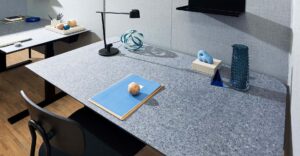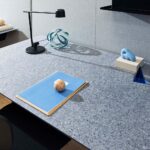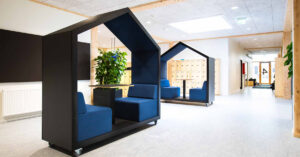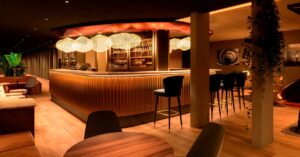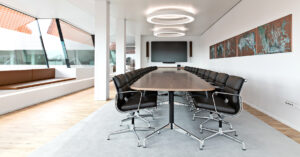What changes do you need to make to the workplace to make it safe for your employees to return after the coronavirus crisis?
Inspired by a world-leading architectural studio’s future vision for workplaces and the concrete changes introduced by a global corporation, we want to share some ideas for how you can make your workplace safer for employees.
All over the world, people are wondering how we will get our lives back to normal.
And the answer is: We won’t. We will be returning to a new daily routine with new habits, new ways of behaving, meeting and working – an altogether new way of life.
There are many indications that the office is where we will see the biggest changes in relation to what we have considered the norm until now.
In British daily The Guardian, one of the biggest architectural studios in the world, Zaha Hadid, argues that we will move away from large open-plan and co-working spaces toward layouts with greater separation:
Arjun Kaicker, Head of User Parametrics at Zaha Hadid, says:
‘I think we’ll see wider corridors and doorways, more partitions between departments, and a lot more staircases. Everything has been about breaking down barriers between teams, but I don’t think spaces will flow into each other so much any more.’
Design Research Unit, one of the first generation of British design consultancies to combine expertise within architecture, graphic design and industrial design, agrees with him:
‘I’m not suggesting we all go back to working in 1950s cellular cubicles, but I do think the density in offices will change. We’ll see a move away from open-plan layouts, as well as better ventilation and more openable windows.’
Darren Comber, CEO at Scott Brownrig, which merged with Design Research Unit in 2004.
In other words, we need to re-think workplace design. And in the Forbes article, ‘5 predictions about how coronavirus will change the future of work’, the conclusion is that the coronavirus crisis is actually helping to make workplaces better:
‘Your office will get better. When employees go back to the office, employers will be forced to re-think their approach to the workplace. Companies will need to consider enhanced cleaning techniques, more distancing and increased choices for employees across a campus (providing places for focus, collaboration, learning, socializing and respite). In addition, all the things employees loved about being home—comfortable places to relax between meetings or personalization for example—will create new demands on the office.”
Tracy Brower, journalist for Forbes.
The post-coronavirus workplace must first and foremost focus on helping employees maintain more distance from each other. This can be achieved by
- Placing fewer people in a room
- Moving furniture around
- Utilizing available spaces, for instance in the canteen or large conference rooms, as workspaces.
Design behavior with nudging
A fourth possibility is to guide employees to keep a distance with the help of nudging. That is designing the workplace layout to encourage the desired behavior.
One of the world’s largest consulting firms in the commercial properties market, Cushman & Wakefield, is a fine example of this. At their Amsterdam offices, they have introduced the design concept ‘6 feet office’, which features one-way ‘walkways’ with arrows on the floor indicating where and in which direction, employees are to walk in the hall. This tool is also used in hospitals.
Similarly, the floor is marked with circles around the individual workstations to indicate how close colleagues can come to each other’s work zones. Divider screens have been put up throughout the offices and at individual workstations.
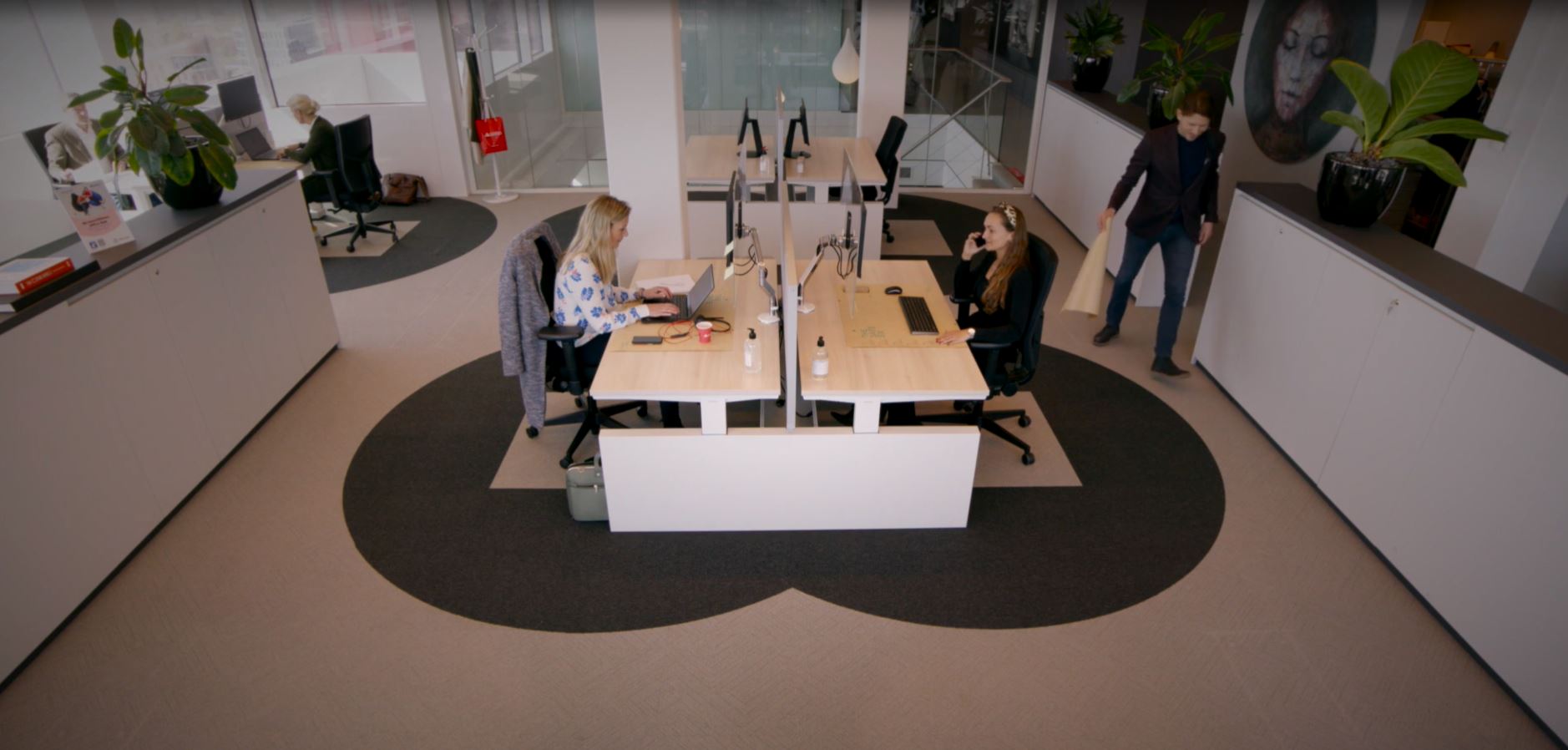
Image from Cushman & Wakefields video about 6 feet office.
All these visual tools help employees intuitively to keep a distance from each other and make the workplace a functional and safe place to be.
A useful and easy alternative to stickers on the floor is rugs. They give the same visual indication that there are zones and borders to be observed.
If you want to change movement patterns and break walking zones, shelving can also be an effective way to influence employees’ behavior in the desired direction.
Create zones
Another important aspect in the new office is a growing need to be able to work in different environments. Activity-based design, where the workplace is divided up into zones that encourage focus, collaboration, socializing etc., will be more relevant than ever for employees.
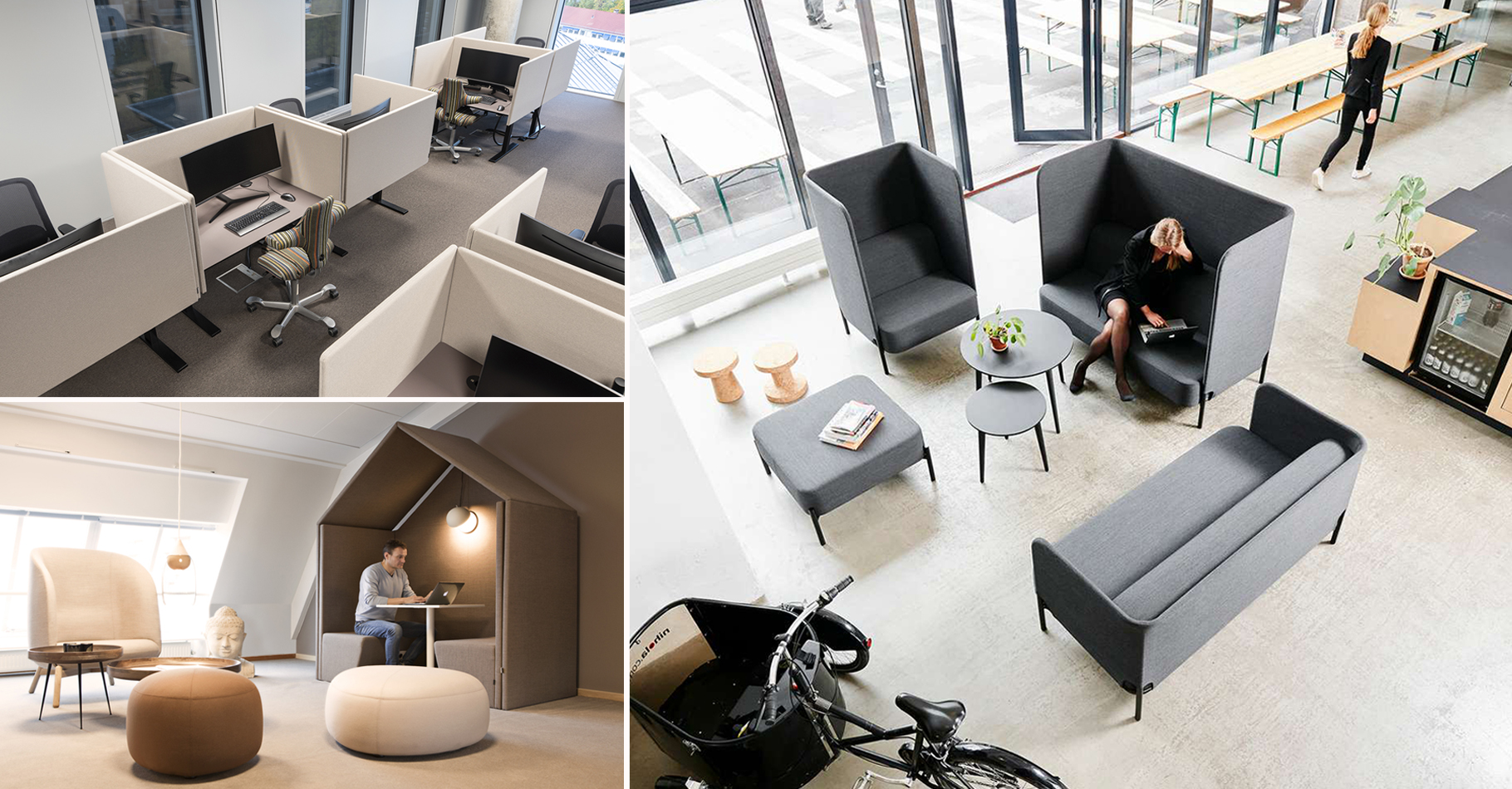
This approach to creating spaces for different types of work activity helps spread employees out more and adds diversity and variety to the workplace. At the same time, it meshes nicely with the need for space optimization that many companies are experiencing. For example, by placing high-backed sofas like TWEET in the canteen or in large open-plan offices, it is possible to create spaces for meetings or focused work.
Need help getting your employees safely back to work?
In this blog post, we have shared just a handful of ways to comply with health authority regulations and meet your employees’ needs for a low-risk workplace.
However, at HOLMRIS B8, we are ready to share our vast knowledge and expertise and our entire array of products to help you meet these challenges.

